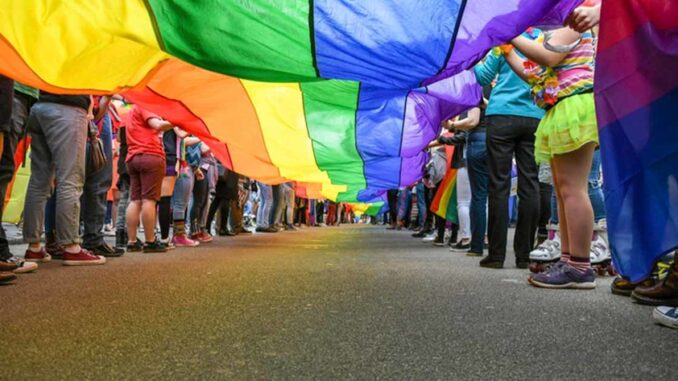
A quarter of US high school students identify as homosexual, bisexual, or ‘questioning’, a figure that has more than doubled since 2015 according to a new report by the Centers for Disease Control and Prevention.
Based on data collected in 2021 and released on Thursday, the CDC’s annual report of 17,232 students found that about three-quarters of teens between the ages of 14 and 18 claimed to be attracted only to the opposite sex.

BYPASS THE CENSORS
Sign up to get unfiltered news delivered straight to your inbox.
You can unsubscribe any time. By subscribing you agree to our Terms of Use
Latest Video
Of the remaining respondents, 12% identified as bisexual, and 9% were marked as ‘other’ or ‘questioning’ their sexuality.
The latest figures mark a record number of youngsters who do not identify as straight which is approximately 1 in 4 students.
The rise of the non-hetero just happens to track a similar rise in mental health issues. Is This just a coincidence?
The New York Post reports: The number of LGBTQ people continues to rise every year. A Gallup poll released in February showed that 7.2% of adult Americans are “something other than heterosexual,” the highest concentration of which belonged to Gen Z.
But the uptick in queer youth may not mean that fewer people are heterosexual — rather, it indicates that more people are comfortable with being openly honest about their sexual orientation and identities. This seems to be especially true among the younger generation, who are chronically online.
“Social media has added to this visibility that there are options that were not previously available,” Ritch Savin-Williams, a developmental psychology professor at Cornell, previously told The Post. “In a positive sense, it sort of says, ‘Hey, look, you don’t have to fit into these boxes.'”
Despite arguments that being queer is a passing fad, Savin-Williams noted that it’s “not that the absolute number of people” who identify as non-heterosexual has grown, it’s that more people are willing to express and “declare” it.
Yet, the trend toward tolerance could be dashed away in places like Florida, where the “Don’t Say Gay” bill is expanding thanks to state legislators, while concerned parents and activists argue that it makes queer youth feel less welcomed.
In its Youth Risk Behavior Surveillance System, the CDC urged schools to create a “more inclusive” environment for queer teens, recommending initiatives such as gender and sexuality alliances, curating safe spaces and enforcing anti-harassment policies.
The agency also found that nearly 70% of LGBTQ students “experienced persistent feelings of sadness or hopelessness” and more than half endured poor mental health.
LGBTQ students were more likely to experience sadness and hopelessness, poor mental health, substance abuse, sexual violence, bullying and suicidal thoughts or behaviors.
When compared to past years, many of the categories trended upward in the wrong direction.
“As in previous reports, we continue to see disparities [in mental health between] students who identify as lesbian, gay, bisexual, questioning or another non-heterosexual identity, or who have had any same-sex sexual partners, [and] their peers,” the CDC report says.


